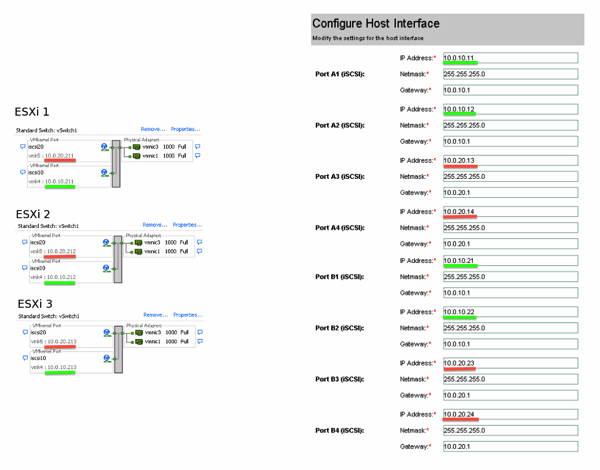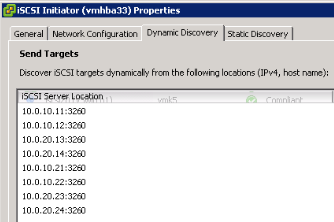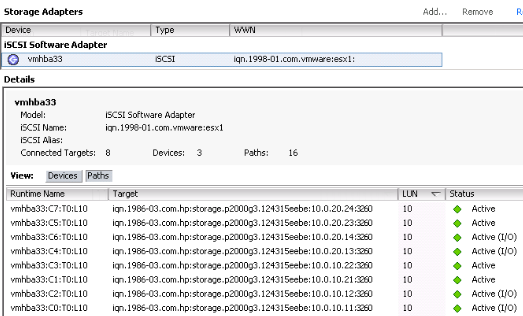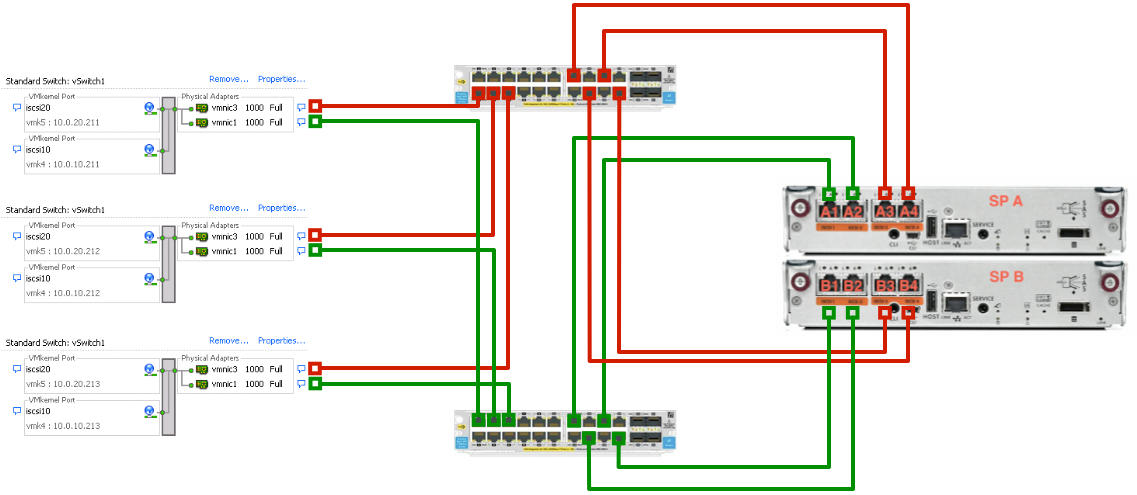How to configure a small redundant iSCSI infrastructure for VMware
I’ve seen often many users asking in forums how to properly configure a network in order to deploy a iSCSI storage, especially in really small environments.
So, I created this post in order to explain how I usually configure a system with an HP StorageWorks P2000 G3 iSCSI storage and a small cluster with 3 vSphere servers. If you are using a different storage, you would probably have to change some configuration, but the principles are always the same.
Needed Hardware
3 VMware vSphere 5.x servers (usually with a Essentials Plus VMware license) . In these situations, I usually dedicate two network cards to iSCSI. That’s because many modern servers have already 4 NICs onboard, so I have two dedicated connections for iSCSI and the other two for all other connection types, like management, vmotion and virtual machines, without having to buy additional network cards.

2 Gigabit ethernet switches with at leat 7 ports each. If you need to add the iSCSI network to an existing infrastructure and youwant to keep it super simple, avoid VLANs and have total physical separation, you would need at leat 14 network ports. This is also useful if your low-end switches have problems in managing VLANS or you are not an expert with them; iSCSI network will be separated, and not connected to anything else. You will connect 8 ports from storage array and 2 from each server. Total is 14, distributed on two switches for redundancy. If instead the switches are going to manage iSCSI and other networks at the same time (by using VLANs), then you will need more ports, in order to manage all vSphere networks, and uplinks to other parts of the network.
1 storage HP P2000 iSCSI, with two storage processors having 4 iSCSI connections each, as in this picture:

Network configuration
The goal of a iSCSI storage network, as in any storage fabric, is to offer redundant connections from sources to destination (ESXi servers and the P2000 in this scenario), so that none of the possible failures in any elements of the chain can stop the communication between source and destination. This goal can be reached by having two completely separated networks, each managed by a different switch.
A completely redundant iSCSI network has several IP addresses; that’s because each path is made by any source-destination IP combination. In order to simplify the configuration of all the IP addresses, I usually follow this scheme:

All IP addresses of Network 1, marked in green, are using a base address like 10.0.10.xxx, and the 10 of the third octect means the Network 1. By the same scheme, Network 2 has a base address 10.0.20.xxx. Also, all the ESXi port groups are following this numbering scheme. In this way it’s easy to assign addresses and be sure each component lays in the correct network with the right IP address.
vSphere configuration
Inside any ESXi server, you first of all need to enalbe the software iSCSI initiator; then you create two vmkernel ports and bind them to only one of the two network cards, one per vmkernel port:

Then you input into the Dynamic Discovery all the IP addresses of the iSCSI storage:

After a rescan, you configure the Path Selection Policy of all datastores to be Round Robin, and the final result is going to be like this:

